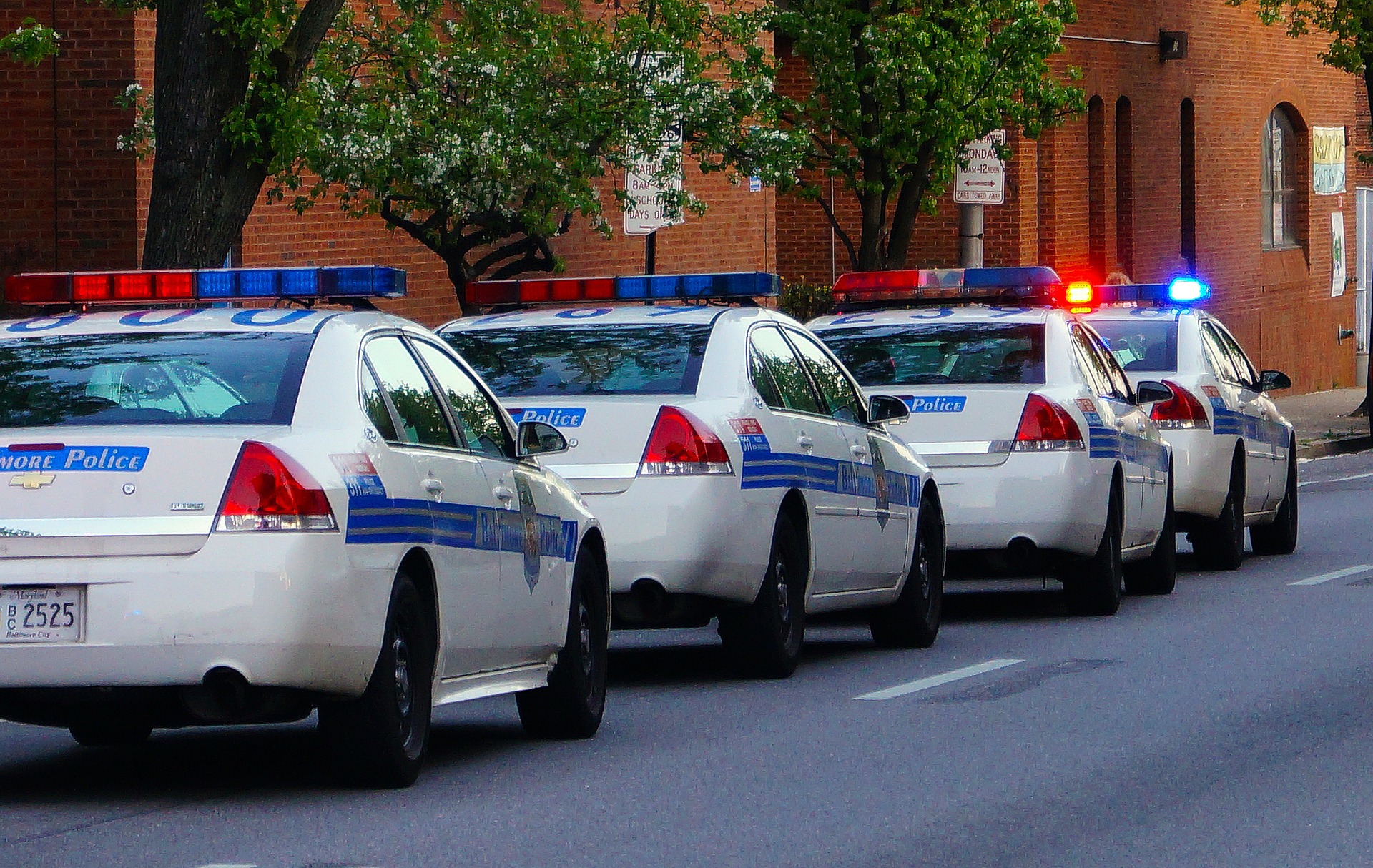The Legislature was out in front of demands for changes to police use-of-force techniques and reporting
By Gary Schons, Best Best & Krieger LLP
San Diego, June 16, 2020 — In the past week, Campaign Zero’s “#8CANTWAIT” was launched in response to George Floyd’s killing and the outcry for police reforms that followed. The campaign is a push for eight police use-of-force reform measures and a database that tracks how these eight policies, meant to curtail police violence, are employed in major cities. Campaign Zero and its advocates have urged and challenged state and local political and law enforcement leaders to implement these eight policies.
In California, many of these policies are already in use.
Campaign Zero is a police reform campaign proposed by activists on a website that was launched in 2015 as a “data-driven platform” with the goal of ending police brutality. Since its launch, Campaign Zero has offered analysis of policing practices across the country, conducted research to identify effective solutions to end police violence, provided technical assistance to organizers leading police accountability campaigns and developed model legislation and advocacy to end police violence nationwide.
According to the Campaign Zero website, the fundamental basis for the #8CANTWAIT reforms is a large correlational study of the relationship between cities’ demographic characteristics, their use of force policies and their level of police killings of civilians. The results, the group claims, are very clear: Adopting these policies is statistically associated with a lower level of police killings, whether judged per person or per arrest.
The eight policies are:
- Require “de-escalation”
- Require a warning by officers before shooting
- Require officers to intervene when excessive force is being used
- Require comprehensive use of force reporting
- Ban chokeholds and strangleholds
- Ban shooting at moving vehicles
- Establish and require “use of force continuum”
- Require that all alternatives be exhausted before shooting
The Campaign Zero website notes that 10 states, including California, have already enacted legislation addressing three or more Campaign Zero policy categories. In the days since the #8CANTWAIT was launched, states and localities across the nation have started to respond to these reform suggestions. Here is where California is ahead of the curve.
1. Require De-Escalation
The essential term here is “require.” Officers are trained in de-escalation and crisis intervention techniques and police department policy manuals commonly address these approaches. But requiring that the techniques be employed affords police departments and their jurisdictions the ability to enforce their use and to discipline officers who fail to conform to the mandates of the policy. The City of San Diego decided on June 9 to work on immediately making its de-escalation policies mandatory.
California Senate Bill 230, passed in the last legislative session and signed into law on Sept. 19, 2019 becomes effective on Jan. 1, 2021. That bill added section 7286 to the Government Code, covering a wide array of law enforcement use-of-force policies. Subsection (b) says that each law enforcement agency must “maintain a policy that provides a minimum standard on the use of force. Each agency’s policy shall include all of the following: (1) A requirement that officers utilize de-escalation techniques, crisis intervention tactics, and other alternatives to force when feasible.” Additionally, SB 230 added section 13519.10 to the Penal Code to require that the Police Officers Standards and Training Commission provide training for all officers in alternatives to deadly force and de-escalation techniques.
2. Require Warning by Officers Before Shooting
Assembly Bill 392, which took effect Jan. 1, amended Penal Code sections 196 (justifiable homicide) and 835a. Section 835a(c)(1)(B) states: “where feasible, a peace officer shall, prior to the use of force, make reasonable efforts to identify themselves as a peace officer and to warn that deadly force may be used, unless the officer has objectively reasonable grounds to believe the person is aware of those facts.” This requirement is consistent with federal civil rights law and jurisprudence.
3. Require Officers to Intervene in the Event of Excessive Force
SB 230, in adding Government Code section 7286(b)(8), sets a “requirement that an officer intercede when present and observing another officer using force that is clearly beyond that which is necessary, as determined by an objectively reasonable officer under the circumstances.” Subdivision (b)(3) is a complementary provision and requires an officer to report to a supervisor when another officer employs excessive force.
4. Require Comprehensive Reporting of Use-of -Force Incidents
SB 230’s addition of Government Code section 7286(b)(12) requires “comprehensive and detailed requirements for prompt internal reporting and notification regarding a use of force incident, including reporting use of force incidents to the Department of Justice in compliance with [Government Code] section 12525.2.” That latter provision was added by legislation in 2015 (AB 71), which requires each law enforcement agencies statewide to provide detailed reporting of serious use-of-force incidents to the California Department of Justice. This provision became effective on Jan. 1, 2017. Additionally, SB 1421, enacted in 2018 and effective Jan. 1, 2019, amended Penal Code section 832.7 to make available, under the California Public Records Acts (Government Code section 6254(f)), records pertaining to an incident of a discharge of a firearm by a peace officer as well as records pertaining to police use of force against a person resulting in death or great bodily injury.
5. Ban Chokeholds and Strangulations
While there are no statutes explicitly banning chokeholds and neck restraints, AB 1196 was introduced in the California Legislature on June 4 and would prohibit a law enforcement agency from authorizing the use of a carotid restraint. Additionally, on June 5, Gov. Gavin Newsom ordered the state’s police training program to stop teaching officers how to use a neck hold that blocks the flow of blood to the brain. Dozens of police agencies in the State have already moved to amend their policies to eliminate the use of or ban chokeholds.
6. Ban Shooting at Moving Vehicles
There are no statutes or legislation specific to this measure. However, many police departments have policies that expressly prohibit shooting at vehicles except in life-threatening circumstances when the officer reasonably believes there are no other reasonable means available to avert the threat of the vehicle, or if deadly force other than the vehicle is directed at the officer or others. Additionally, in March 2016, the Police Executive Research Forum released its “Guiding Principles on the Use of Force.” Guiding Principle No. 8 prohibits shooting at moving vehicles. This is clearly a tactical and exigent matter within the overall scheme of reasonable use of force.
7. Require Use of Force Continuum
Many law enforcement policy makers and trainers, including the Police Executive Research Forum, hold that the use of force continuum is rigid and mechanical and an outdated model that has proven impractical, even dangerous, when applied in real life situations. Instead, provisions in AB 392 and SB 230 focus on requiring officers to create space and separation in an attempt to utilize de-escalation techniques and require policies be adopted by police agencies to require and carry out proportionate and appropriate use of force, generally.
8. Require Officers to Exhaust All Means Before Shooting
Government Code section 835a(c)(1), as amended by AB 392, and already in effect, says: “a peace officer is justified in using deadly force upon another person only when the officer reasonably believes, based on the totality of the circumstances, that such force is necessary for either of the following reasons: (A) To defend against an imminent threat of death or serious bodily injury to the officer or another person. (B) To apprehend a fleeing person for any felony that threatened or resulted in death or serious bodily injury, if the officer reasonably believes that the person will cause death or serious bodily injury to another unless immediately apprehended.”
Thus, California law enforcement agencies are well on their way to achieving compliance with the #8CANTWAIT policy suggestions.
Gary Schons is of counsel at Best Best & Krieger LLP, where he heads the firm’s Government Policy & Public Integrity group. He previously served as a deputy district attorney and senior advisor for Law & Policy in the San Diego District Attorney’s Office, as trial counsel for the Commission on Judicial Performance and as a member of the California Attorney General’s Office Criminal Division in San Diego. He can be reached at gary.schons@bbklaw.com.






